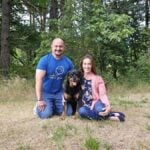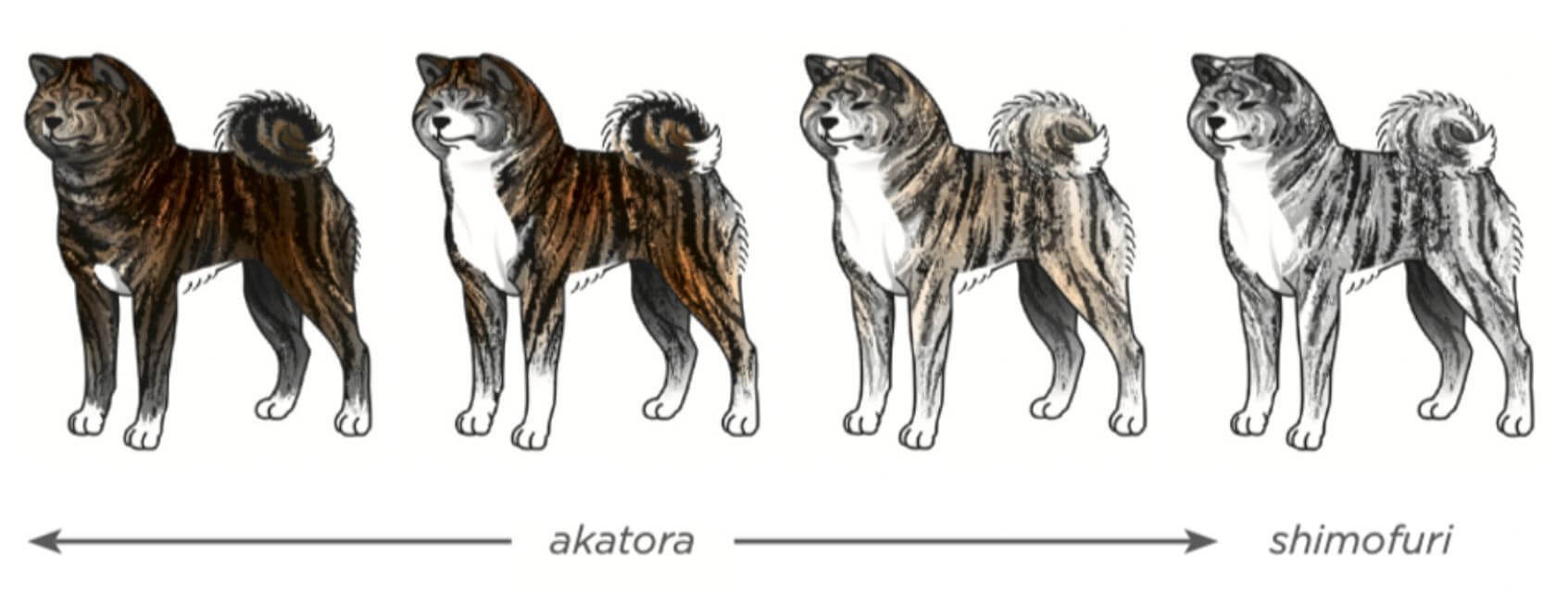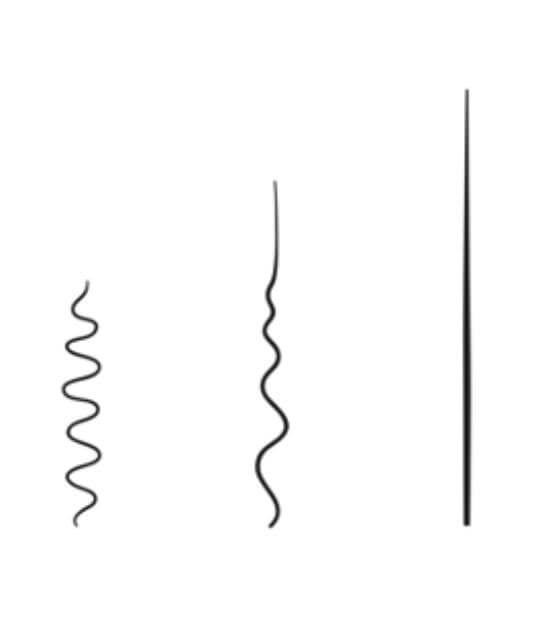


Home » Continued Topics on the Japanese Akitainu

In our previous article about the Japanese Akitainu, published on the SHOWSIGHT website, we touched on subjects such as the breed name, prospective AKC Group designation (for when the breed is fully recognized), breed origin, type, structure, and judges’ approach in the Conformation ring. We appreciate that judges, breeders, and other readers eager to learn more about the breed have expressed an interest in other topics. As the Japanese Akitainu Club of America (JACA) Judges Education Committee has been preparing our Judges Education Guide and other educational materials, we are happy to share a glimpse of what’s in store for later publication.

As with the dog’s overall appearance and essence, fundamental balance is key to a Japanese Akitainu head. The skull size is moderate and in proportion to the body. From the front, the shape of the face may be described as a slightly oval octagon with points intersecting as symmetrically as possible. Fullness of the cheeks, as well as the coat on the cheeks and neck, support this shape. The forehead is broad and flat, preferably with a distinct furrow extending from the moderate stop to the top of the skull.

Akitainu prick ears are relatively small, equilaterally triangular in shape with a slight forward angle off the back of the head. Ear leather is thick, slightly cupped, and has a gentle curve at the tip rather than a point. Ears that are too narrow in width, too thin in texture, and too straight in angle throw the adult Japanese Akitainu head off balance. From the profile view, the forward tilting ears are at a 75- to 90-degree angle to a line drawn along the bridge of the muzzle (keeping in mind that the ears may turn to the side when the dog is “listening” to his environment).

The eyes are deep-set, almond-shaped, relatively small, and slightly raised at the outer corners. The dark brown irises show a depth and clarity, and the rims are black and thick on brindle and red Akitainu; however, on a white Akitainu, the eye rims may be lighter in color. This variation also applies to the pigment on the nose and lips according to the color of the dog. Pigmentation on the nose of an adult brindle or red Japanese Akitainu is black, while on a white dog a faded black or snow nose is acceptable. The tongue is pink; a dark tongue or spot on the tongue is considered a fault. The upper lip should not hang below the jawline, and neither the upper nor lower lip should appear saggy. Light-colored, round, droopy eyes (downward outer corners) and loose lips are not the ideal for this breed.

The muzzle length is 40 percent of the total head length from occiput to nose tip. It should not be overly narrow, too short, nor so long that it appears snipey. There are three possible shapes for the muzzle: circular (preferred), rectangular, and triangular.
Sexual dimorphism is an important feature when judging the Japanese Akitainu, and is obvious on a correct head. Males possess a wider head, a heavier, more masculine muzzle, and sharper eye expression than their female counterparts. Females, by comparison, possess a more narrow head and delicate muzzle, and may have slightly wider eyes for a softer expression to convey femininity, gentleness, or as one Akitainu Hozonkai (AKIHO)* judge from Akita Prefecture phrased it at a seminar, a certain “sweetness.”

The brindle pattern in the Japanese Akitainu, referred to as tora (tiger) in the Japanese language, is perhaps the most complex and nuanced of the three colors in the Standard. In our breed, brindle is defined as clearly marked dark, fine streaks or stripes laid over a lighter background color.

Brindle coat color is specifically identified as akatora or red brindle (of varying shades from pale to deep red, though the middle ground is preferred), kurotora or black brindle (some may be so dark that the striping is only more easily seen in certain light conditions), and a subtype color called shimofuri or grey/silver brindle.
It is not uncommon for newcomers in the breed community to confuse shimofuri with the less-than-ideal extremely pale red brindle or to even refer to their Japanese Akitainu as blue brindle, a color that does not exist in the Standard and is considered an advertising term by knowledgeable enthusiasts.

Brindle Japanese Akitainu may be self-masked or have a white blaze that extends up the muzzle. But if the blaze is extreme and extends back to the base of the skull, it is a fault known as hachiware (split head or split pot) in Japanese.
The ideal brindle possesses roppaku (six points of white markings) of varying degrees, on the muzzle, four paws, and tip of the tail.

Urajiro (white undershading) on brindles is on the underside of the jaw, neck, abdomen, tail, and on the inside of the legs.
A small to moderate white spot at the back of the neck is acceptable.
White around the neck area is also acceptable; however, a full white collar on an Akitainu is a serious fault.
Hachiware, or an extreme blaze that connects to a full collar, is a disqualification.

One of the most significant traits for brindle Japanese Akitainu is correct striping. Look for stripes that appear evenly distributed, though not necessarily symmetrical, on the back and along both sides of the loin and flank. If there are large gaps between the stripes, the background color may appear splotchy and distracting. If the striping is too close together, it has a muddying effect.

Perhaps one of the most puzzling attributes of the Japanese Akitainu for many individuals outside the breed is the idea of the triple coat. Historically, AKIHO judges and breeders in Japan were taught that the breed has three coats, or types of hair. In Japanese, these are referred to as menmō, sōmō, and harige (see illustration). An Akitainu in full coat has a plush undercoat comprised of two sections and an outer coat that is stiffer and coarser, standing off the body.

Menmō, curly from top to bottom, is the shortest and finest coat, found closest to the skin. Somō is respectively medium in length, curly at the base and straighter at the tip; it may be considered something like a middle coat. Harige, seen on the back, withers, croup and tail, is the longest, thickest, and straightest hair.
These are just a few topics that will be covered with more depth in JACA’s education material for AKC judges. For further information, please feel free to contact the Chairperson of JACA’s Judges Education Committee, Mrs. Lonny Cohen, at: nutmeg4141@gmail.com. To request a copy of JACA’s AKC Quick Guides, contact: hope@akita-inu.com.

